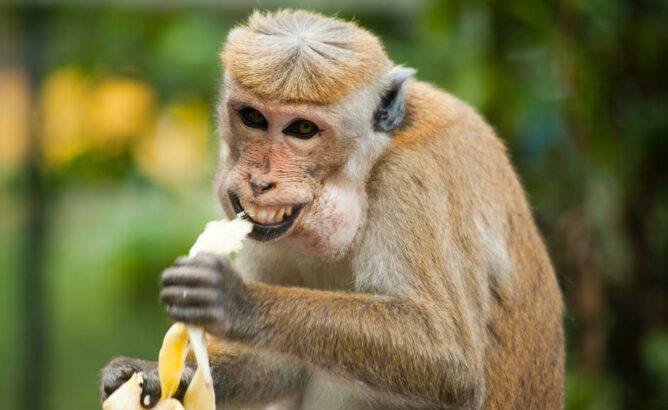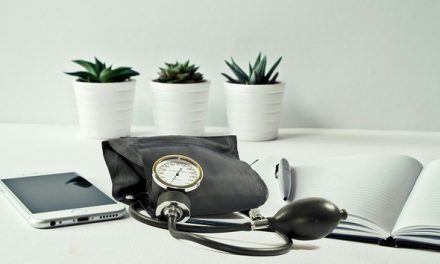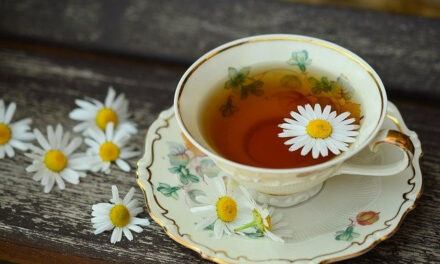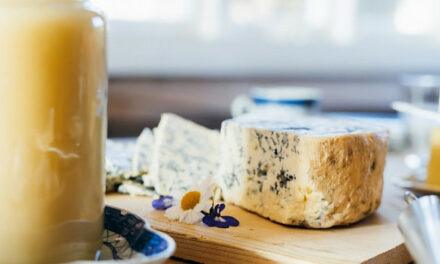When thinking of fruit, bananas are typically one of the first ones that come to mind. Those long, yellow pieces of fruit tend to be engraved into peoples minds as one of the most popular, well-known fruits out there. Although not everybody enjoys the taste, this fruit holds many nutrients, and are very good for you overall. They have many benefits, and they might even be linked to lowering blood pressure. But, Is Banana good for high blood pressure?
Bananas actually hold more nutrients than most other fruits out there. They can help with many different issues that the human body can possess, and they can give you many nutrients that may help you feel better than normal, especially if you’re low on any vitamins or minerals. These fruits are go-to fruits when you start not feeling well, as their nutrients tend to lift people up and help them feel better, even just a little bit.
Today, we will be discussing the exact nutrients in bananas, as well as discussing whether it is true that they can potentially lower blood pressure in high blood pressure patients.
So, let’s get started.
What is Banana? Types of Banana
A banana is an edible fruit, that’s botanically a berry.
These pieces of fruit hold many nutrients, including lots of vitamin B6, vitamin C, magnesium, fiber and protein.
They’re actually one of the top sources of potassium out there. When people think of potassium, they tend to think of bananas, since they do hold quite a bit of it.
Now, fun fact, there are a thousand different varieties of bananas, but today, we’re going to talk about the most popular banana types out there.
These bananas include:
1. Cavendish Bananas
These are the long, yellow bananas that you see in the grocery store. Those are what most people think of when they think of bananas. They’re slightly sweet, and you can find them in just about every supermarket or grocery store.
2. Apple Bananas
These bananas are small and yellow, with a slight pinkish tone to them. They’re fairly sweet, which is why they’re sometimes called Candy Apple Bananas.
3. Lady Finger Bananas
These ones are smaller and sweet than the typical Cavendish bananas, and are great as a portion-controlled snack.
4. Red Bananas
These bananas, as the name suggests, are red, and tend to be pretty sweet. There are many different types of red bananas, but they all have those two things in common.
Now that we’ve discussed bananas and a few of the different types out there, let’s start talking about what we’re actually here to discuss today… Can bananas bring down high blood pressure?
Let’s find out.
Can Banana Bring Down High Blood Pressure?
Just like many other foods, it doesn’t work for everyone, but yes, it is possible for bananas to bring down high blood pressure.
It’s actually more likely bananas to lower your blood pressure than many other foods they have done research on to see whether they lower blood pressure or not. Though many foods got good results, and they can lower blood pressure in not all, but some cases, due to the nutrients bananas hold, it is more likely for a banana to lower your blood pressure.
Although it doesn’t always work, it is really likely that eating bananas regularly will lower your blood pressure, by as much a 10% in a week, which we will talk about in a minute. But if you suffer from high blood pressure, multiple researchers and the FDA suggest that you grab a banana as a snack to help lower your blood pressure.
Now, let’s dig deeper, and discuss why they say that, what exactly bananas do to help you with high blood pressure, and how much the FDA recommends you eating a day in order to lower your blood pressure by as much as 10%.
Let’s find all this out, and more, right now.

How Banana Helps Lowering High Blood Pressure? What Does the Research Say?
As I said above, bananas are full of potassium, and there’s actually been research on how potassium, and food items that contain potassium, can lower blood pressure. This has been researched quite a few times, as it’s something people desperately wanted to know the answer to.
Multiple researchers have found that consuming foods that are rich in potassium is helpful in lowering hypertension.
And actually, the FDA has said something about this as well. They have said that eating foods “rich” in potassium and low in sodium (such as bananas) can reduce your risk of high blood pressure. They also said that eating these foods might reduce the risk of heart disease and stroke as well.
Also, according to some research studies that have been conducted, 2 bananas a day for 7 days can reduce your blood pressure by 10%.
Like I said above, lots of foods have been studied to see if they can help lower blood pressure. And with most, they found that although it doesn’t always work, it can potentially work. It’s the same with bananas. However, they also found that even though it doesn’t always work, bananas are more likely to work than most other foods, as potassium has been linked to lowering blood pressure.
So, if you’re looking to lower blood pressure and there’s no reason you can’t eat bananas (assuming you are not diabetic), eat a banana twice a day for a week, and see what happens. There’s no harm in it, and you’ll see if it works for you.
Tip: Banana is also a prebiotic that can come handy as a part of reactive hypoglycemia snack.
When is Banana Bad for High Blood Pressure?
The reason bananas are good for high blood pressure is because of the potassium they possess. Potassium seems to be something that works really well when it comes to lowering blood pressure. So potassium-rich foods (such as bananas) have a really good shot at working to lower blood pressure, and typically help you manage high blood pressure pretty well. But, the time’s that potassium-rich foods aren’t good for you, despite you having high blood pressure, are in situations where you have problems with your kidneys as well.
Potassium is one of the worst things you can put in your body if you have a kidney disease. This is because if you have kidney disease, disorder, or another problem with your kidneys, your kidneys obviously will not function properly. Because of this, your kidneys will become less able to remove potassium from your blood. So over time, too much potassium may build-up, and result in many not so great outcomes.
Too much potassium in your blood can lead to feeling sick to your stomach (just like after eating too much watermelon), a weak or irregular pulse, and possibly can make you fainting. So if you have a kidney problem, stay away from bananas and potassium, because it will just harm you, rather than help you.
In addition, bananas are rich with sugur. So, if you have diabetes, eating too many bananas a day can affect your efforts in controlling blood sugar.

Tip: Did you know garlic can help you reduce blood pressure?
How Banana Interacts with High Blood Pressure Medications?
Medications that are used in order to help lower blood pressure make blood vessels relax and dilate. It does this to decrease the heart’s workload and improve circulation in your body. But potassium can interact with these medications, which means bananas can interact with these medications. What it can do is different for everybody.
Prof Lingtak-Neander Chan, a professor of pharmacy at the University of Washington School of Pharmacy says “There are different types of interactions, and the magnitude of the interaction (caused by banana on antihypertensive drugs and it) depends on many factors,”. Along with that, he also said “These drugs have the tendency to increase potassium retention by the body, and elevated potassium concentration in the blood (by added potassium through banana) increases the risk for developing irregular heartbeats.”.
So that is the risk when it comes to taking these ‘antihypertensive’ medications, and eating bananas, or another potassium-rich food.
Therefore, when you are on high blood pressure medication, it may be smart to ask your doctor what they think of you eating food with high potassium, and if it would be safe for you to do so.
How Much Banana is Good for Your Health? How Much Banana Bad?
Like I explained earlier, the FDA recommends 2 bananas a day for about a week to lower your blood pressure by 10%. However, the truth is, even if you aren’t trying to lower your blood pressure, it might still be a good idea to try that.
Two bananas a day is a perfect serving for you to absorb all the nutrients from it, and get all the benefits (such as it lowering your blood pressure, when relevant). So if you feel like bananas would benefit you, that’s a good amount to eat every day.
Eating one a day would help as well, though. Maybe not quite as fast, but it would be pretty close. It would still give you all the nutrients and benefits, even if you don’t feel the effects as fast. So eating one a day so that might be a good place to start.
When it comes to how much banana is bad for you, of course, there’s an answer. Even healthy foods, when you eat too much of it, it can potentially make you sick, and lead to unhealthy weight gain. There’s no certain amount of bananas that would automatically make it too much and make them bad for you because of that. But 1-2 a day is considered moderate intake for adults. So, anything beyond that (as a daily habit) might potentially be a risk of it being too much.
Just like most foods, eat it in moderation, and you should be okay.

Tip: Banana can help you improve muscle elasticity and preventing muscle pain and cramps.
How to Select a Good Banana? How To Store Them?
If you don’t want to eat your banana(s) right off, go for the greener ones, as they might not be ready to eat for a couple days, and they will last longer. They will be ready to be eaten by the time you are ready to eat them.
If you want to eat them immediately, go with the bright yellow ones. They’ll last for up to a week after you buy them, but they’re ready to eat as soon as you purchased them.
But once the bananas have started to become brown and mushy, although still edible, almost no one would want to eat it. So try to stay away from any bananas that look like they’ve started to rot.
As far as storing them goes, if the bananas will be eaten in the next few days, leaving them on the counter, table, or in a fruit bowl is fine.
However, if you want to save them and eat them at a later date, the freezer is your best bet to keep them fresher for longer.
The one place you never want to store bananas is the refrigerator. When bananas are kept in a fridge, they turn brown and mushy within a couple of hours, a state that it would take about a week to get to if they were sitting on the counter.
So, if you’re planning to get bananas, here is the best advice I could give on how to select good bananas, and how to store them.
The Ways You Can Consume Banana?
Bananas, though a very popular fruit, are not enjoyed by everyone. Typically, when people dislike bananas, half of the time, it’s because of the texture, the other half because of the taste. Either way, these people tend to not consume bananas at all. But I’m here to tell you today that there are many ways to consume bananas.
They’re a fruit you can put into many things.
Here are a few specific ways you can consume bananas, whether you dislike them for their texture, their taste, or you do like them, and you’re just looking for new ideas as to how to consume them, despite not disliking them.
1. Smoothies
Mixed with other fruits and berries such as strawberries, raspberries, blueberries, mangos, etc. and a yogurt or juice base will taste heavenly.
The bananas add some extra sweetness to the smoothie, so you can taste all of the sweetness without the texture of the banana itself.
2. Toppings on cereal
You can cut up a banana and put it on any cereal you like. It blends in nicely when it comes to taste, but this probably isn’t the idea for you to sneak in some bananas if you dislike the texture.
3. Yogurt
Most people use vanilla yogurt as it pairs with the bananas nicely and no other strong flavor gets in the way. However, you can really use any type of yogurt you like, and you can put as much fruit in it as you like, not just bananas.
Conclusion
In conclusion, eating bananas does give you a chance of lowering your blood pressure.
The potassium content in bananas can lower your blood pressure, giving you some relief from the symptoms high blood pressure causes, as well as the worry about what else might happen to you and your health due to having high blood pressure.
If there’s no reason you can’t eat bananas, there’s no reason anything bad could happen, it is a good idea to start eating 2 bananas a day, for at least a week, and see if it makes a difference. It’s even FDA recommended, and so many different studies and researchers show that it works, so recommend it as well. So that’s an idea, and an option for you to consider in order to potentially lower your blood pressure.






0 Comments